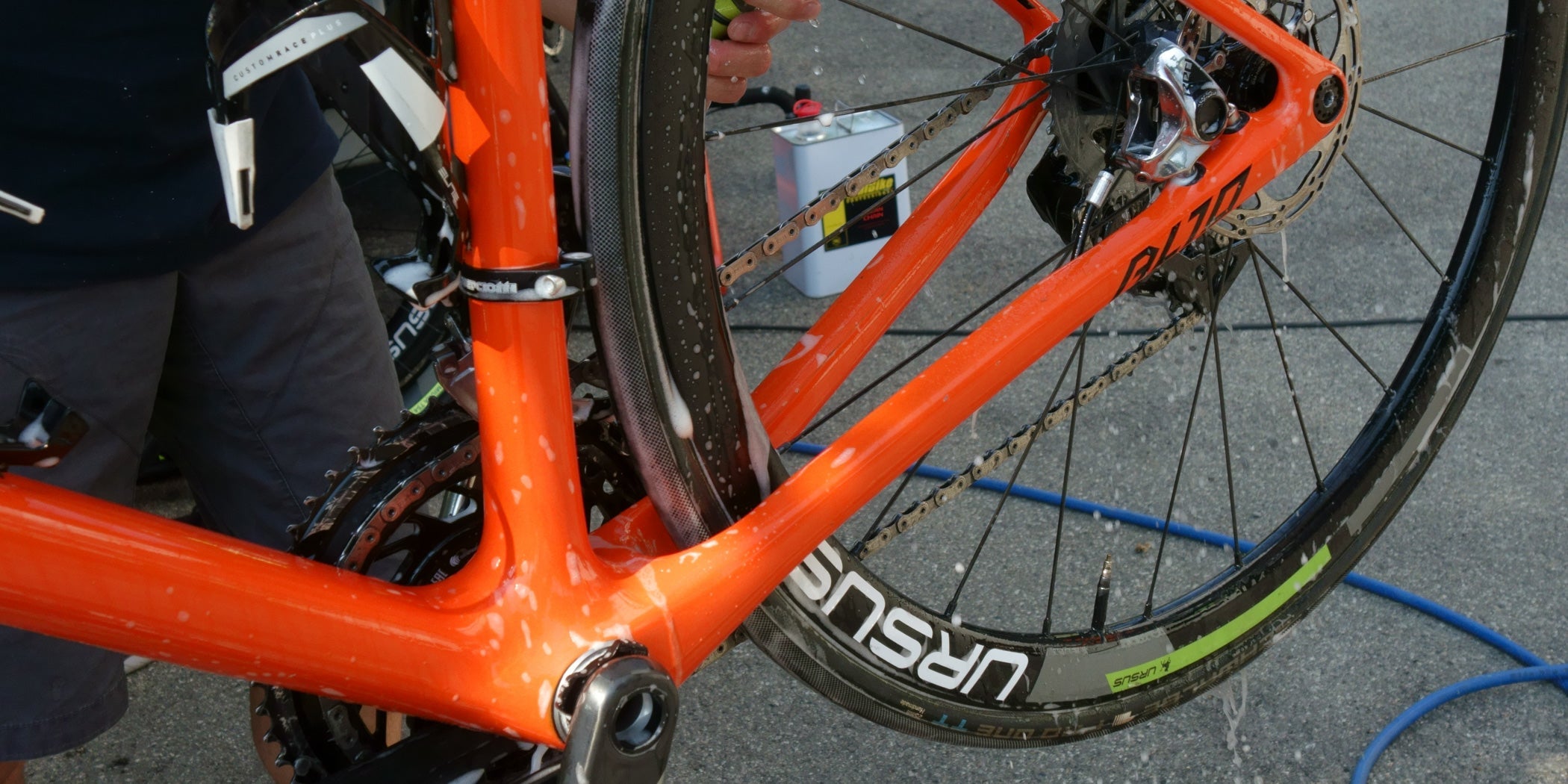Cleaning your road bike isn't just a way to show your bike how much you care about it, it's also a fundamental practice for the proper functioning of all its components. Cleaning your road bike is part of its maintenance, a very important detail that should be done regularly.
Let's treat her like she deserves
For cyclists who truly love this wonderful sport, the bike is more than just a means of transport. It's the companion for unforgettable adventures and great efforts, the one with which to tackle tough training sessions and compete in races. In short, it's a constant presence in the lives of those who practice cycling with passion and consistency. To ensure it always performs at its best, the bike must be kept in optimal condition, and this doesn't just mean performing routine and extraordinary maintenance at a trusted mechanic. In fact, a racing bike shouldn't be serviced when it has problems, but always, precisely to prevent any unexpected issues. Cleaning a racing bike is a crucial part of maintenance. Many overlook this detail, which is actually incredibly important for extending the life of many of its components.
How and when to clean your racing bike
Cleaning your road bike is a must after every ride , but the duration and intensity of this cleaning depends on several factors. For example, if we've been out in the rain or on wet roads and the bike is covered in mud and dirt, it obviously needs to be cleaned thoroughly and thoroughly.
If, however, we have taken a short ride on clean, dry roads, the bike will not need a thorough cleaning, but simply a "go-over" to remove dust and whatever little dirt, which will certainly have found its way between the bicycle's gears, anyway.
Furthermore, when washing your road bike, it's always best to use a manual procedure and avoid using a pressure washer at a car wash. This is a convenient and quick method, but the powerful jet of water can damage seals and bearings. So, arm yourself with patience and the right tools to clean your road bike.
What to use to clean your racing bike?
Here are some simple tools you can use to clean your road bike, cleaning items you probably already have at home:
- a bucket for water
- cloths and tea towels
- detergent
- non-abrasive sponge or brush
- lubricant
We recommend filling the bucket with warm water and a detergent, such as a degreaser. After wetting the sponge or brush, gently clean all visible parts of the bike. This step helps remove dust and dirt from the frame and the most superficial areas of the bike. If possible, it's best to place the bike on a tripod: this will be more comfortable and will make it easier to reach the parts of the bike that need cleaning.
Let's now go into detail and see how to clean the brakes, gears and chain.
How to clean road bike brakes
An important sign that the brakes need cleaning is the noise or whistling they make when you apply them to stop the wheel. There may be dirt residue on the pads or discs, so they must be cleaned very carefully. Depending on whether you have pad or disc brakes, there are different cleaning procedures to follow. The two types of brakes have important differences in operation and maintenance: find out which ones.
- Cleaning the rim brakes
Here are the procedures to follow:
- unhook the brake cable
- wash the rim and the skate with hot water, using the brush
- check that there is no dirt deposited on the skate
These simple precautions will ensure that your brake pad is properly cleaned.
- Cleaning the disc brakes
Here are the procedures to follow:
- unhook the wheel
- wash the disc with water and detergent
- dry the disc with a cloth
- perform a final cleaning of the disc with alcohol
- check that there is no residual dirt in the disc seat
The disc brake requires more attention as there is a risk of scratching and damaging the mechanism.
How to clean your road bike's gear shifter
Here too, the tools you'll need are warm water, detergent, and a sponge. Remove the wheels, brush, and then rinse the cassette and balancer. Once cleaning is complete, it's good practice to lightly lubricate the transmission components to protect them from moisture and prevent rust.
How to clean your road bike chain
As with brakes and gears, cleaning the chain is very important, as residual dirt can impair proper functioning and, over time, lead to irreversible deterioration. As with cleaning brakes and gears , equip yourself with warm water, degreaser, and a sponge to thoroughly wash the chainrings and derailleur. As for the chain, it's best to first use a clean, dry cloth to remove dirt, carefully wiping down each link and ring. Then proceed with washing, and once finished, a light lubrication is recommended. It's very important to perform this step correctly, trying to work the lubricant into the chain rollers and, once finished, removing any residual grease with a cloth.
Conclusion
Sometimes it's laziness, sometimes a lack of time, but the fact is that too often we neglect this important task: cleaning our racing bike. It's not just the thought of having a sparkling clean bike that should drive us to constantly clean it, but we must learn that cleaning the components is an integral part of racing bike maintenance, the first step. The more consistent we are in this, the less our bike will need extraordinary maintenance and will last longer, ensuring proper functioning.
So, at the end of your rides, always set aside at least 15-20 minutes for at least a superficial clean: your bike will thank you.





